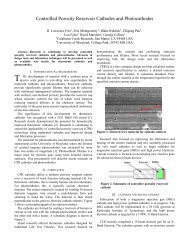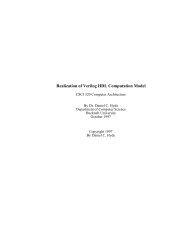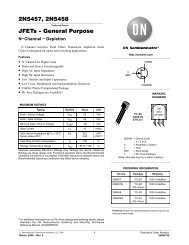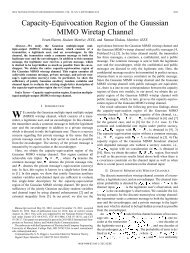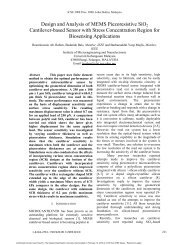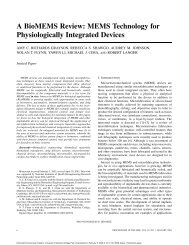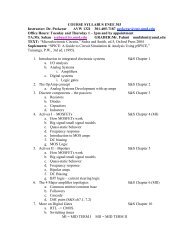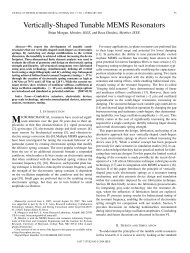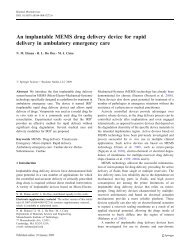Damascene Process Report - ECE
Damascene Process Report - ECE
Damascene Process Report - ECE
Create successful ePaper yourself
Turn your PDF publications into a flip-book with our unique Google optimized e-Paper software.
the seed layer, the structure is electroplated with copper. Final step is to planarize the excess copper. The<br />
process steps are shown in figure 1 below:<br />
A variation of <strong>Damascene</strong> process is Dual <strong>Damascene</strong> process. In this process, the vias and the metal<br />
lines are created by etching holes and trenches in the dielectric, after which copper is deposited in a single<br />
step. In Dual <strong>Damascene</strong> process, one photo/etch step is needed for making holes for vias in the dielectric<br />
and another photo/etch step is needed for making trenches for metal lines. These two photo/etch steps can be<br />
performed in any order, i.e. via first then trench or trench first then via. The process steps are shown in figure<br />
2 below:<br />
Fig. 2 : Dual <strong>Damascene</strong> <strong>Process</strong> [2]<br />
Chemical Mechanical Planarization (CMP) is “a process of smoothing wafer surfaces with the<br />
combination of chemical and mechanical forces” [8]. The main reason for using a hybrid of chemical etching<br />
and free abrasive polishing is because mechanical grinding alone causes too much damage to the wafer<br />
surface, while chemical etching alone does not promote good planarization of surface. This process is<br />
generally used to remove silicon oxide, poly silicon, and metal surfaces and to provide plane surfaces.<br />
There are several components involved in CMP. First, there is platen, which is a rotating base that<br />
holds all the components on top. Abrasive sponge-like pad covers platen and rotates with the platen to



